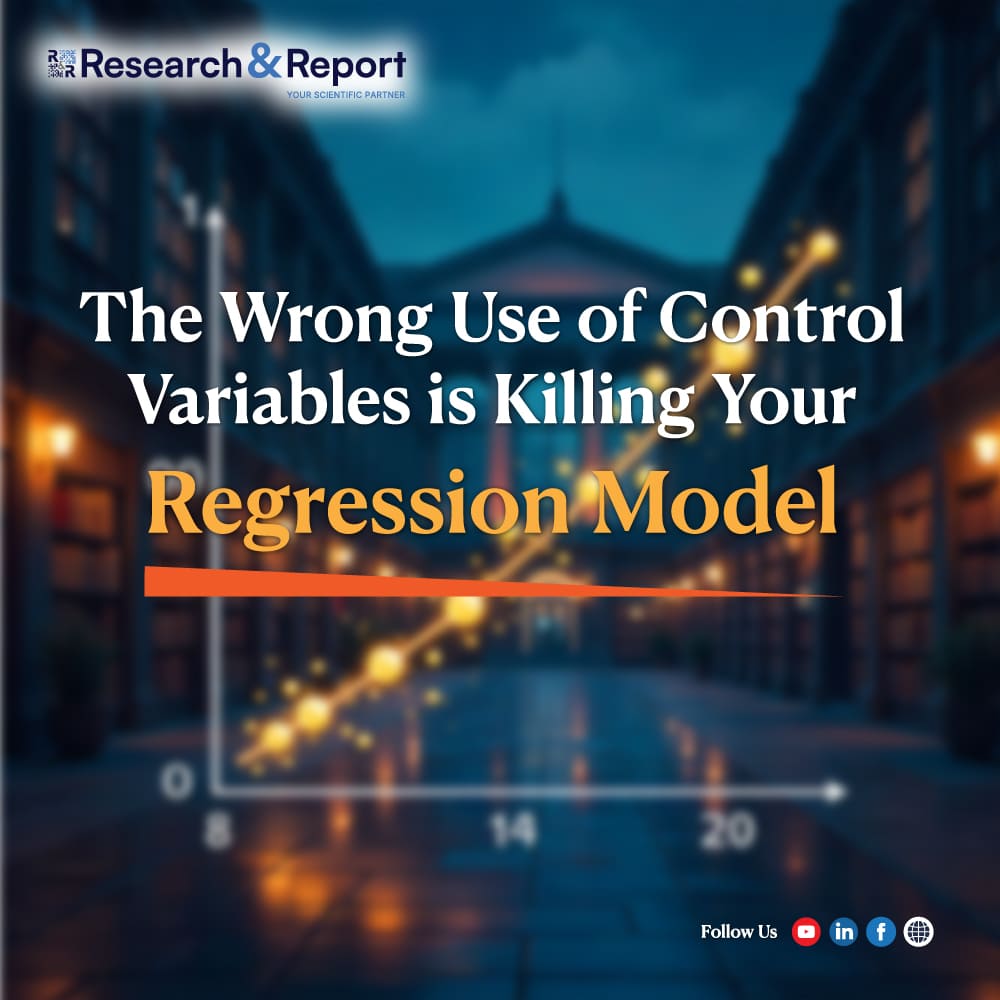Regression analysis is one of the most widely used statistical tools in empirical research. Yet, beneath many published models lies a silent killer of validity: the misuse of control variables.
Too often, researchers include controls reflexively — without a clear understanding of their role in causal inference or model integrity. This article dives into what most researchers get wrong and what must be done to fix it.
The Common Misconception
Many assume that “more controls = more rigorous model” — but this is dangerously misleading. Adding control variables without theoretical or causal reasoning does not refine your model — it distorts your coefficients, introduces bias, and can even reverse effect directions.
Five Critical Mistakes in Using Control Variables
1. Overcontrolling
Including variables that mediate the effect of the independent variable (i.e., lie on the causal path) removes part of the effect you’re trying to estimate. Instead of clarifying the relationship, you’re blocking it.
Example: Controlling for income when studying the impact of education on health might remove part of education’s true effect.
2. Mechanical Inclusion Without Theory
It’s common to see researchers add a long list of demographic or institutional controls because “others did it.” But every control must have a causal justification. Without it, you’re just adding noise.
- Use Directed Acyclic Graphs (DAGs) or causal diagrams to justify inclusion.
3. Post-Treatment Bias
Controlling for variables affected by the treatment (independent variable) creates endogeneity and invalidates the causal interpretation.
Example: If you’re assessing the effect of a training program on productivity, you shouldn’t control for motivation if the program affects motivation.
4. Multicollinearity
Including controls that are highly correlated with key independent variables inflates standard errors and makes your estimates unstable or misleading.
A model with multicollinearity may show insignificant results even when real effects exist — leading to incorrect conclusions.
5. Inconsistency Across Model Specifications
When researchers change the control set across models without theoretical reasoning, results become incomparable. This undermines internal validity and reviewer confidence.
Rule of thumb: Control variable sets should be theoretically consistent across related model specifications.
The Real Role of Control Variables
Control variables are not statistical decorations. They serve one purpose: to adjust for confounding — variables that influence both the independent and dependent variables.
- Good controls block spurious associations.
- Bad controls distort, bias, or suppress real relationships.
If you can’t justify a control’s causal role, you probably shouldn’t include it.
Best Practices to Avoid Regression Model Pitfalls
- Start with a causal framework — Use DAGs to visualize relationships and determine necessary controls.
- Avoid including variables on the causal path between treatment and outcome.
- Pre-register your model design, including controls, to avoid post-hoc bias.
- Use variance inflation factors (VIF) to check for multicollinearity.
- Clearly document your rationale for each control in your methods section.
Final Thought
Misusing control variables can make a solid dataset tell the wrong story. And no amount of statistical sophistication will fix a model grounded in weak logic.
Smart modeling starts with smart thinking.
Before you control for anything, ask yourself: What exactly am I trying to control for — and why?

